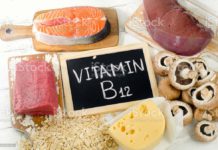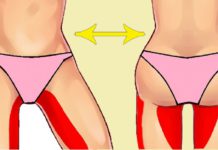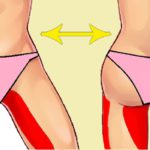Fiber, an invincible hero in the realm of nutrition, has been the talk of the town in recent years. But what is it about fiber that’s causing such a stir? In this blog post, we will answer the question “What Food is High in Fibre?” and explore foods teeming with fiber. We’ll also unpack why these foods are so beneficial to our health. And we’ll share some tasty and creative ways to weave these high-fiber delights into your everyday meals.
Understanding the Power of Fibre
Before starting our culinary journey through the world of fiber, let’s take a moment to understand what exactly thread is and why it’s vital to our health.
Fibre, often called dietary fiber, is a nutrient found in plant-based foods that the body cannot digest. This indigestibility, far from being a disadvantage, is fibre’s superpower. It helps maintain digestive health, keeps our blood sugar levels stable, lowers cholesterol levels, and even aids in achieving healthy weight1.
Fibre comes in two primary forms: soluble and insoluble. As the name suggests, soluble fiber dissolves in water to form a gel-like substance that slows digestion, helping us feel full for longer. On the other hand, insoluble fiber adds bulk to our diet and aids in regular bowel movements, acting like a natural broom that sweeps through our digestive tract.
Now that we have a basic understanding of fibre, let’s explore some of the best sources of this remarkable nutrient.
High Fibre Foods to Include in Your Diet
Let’s delve into the wide range of foods that are high in fibre. We have compiled a list of foods that not only are a rich source of fibre but also come with many other nutritional benefits.
- Whole Grains: Consider foods such as brown rice, oatmeal, and whole wheat bread – these whole grains are a fantastic wellspring of fiber. They are packed with essential nutrients and have been linked with reduced risks of heart disease, obesity, and certain types of cancer.
- Legumes: Beans, lentils, and peas belong to the legume family and are packed with both soluble and insoluble fibers. Their high protein content makes them a fantastic option for those following vegetarian and vegan diets.
- Fruits and Vegetables: As the foundation of a high-fibre diet, fruits, and vegetables are not to be missed. You’ll find a lot of fiber in foods like apples, bananas, oranges, strawberries, raspberries, and pears. As for vegetables, artichokes, green peas, broccoli, and Brussels sprouts top the chart.
- Nuts and Seeds: Nuts and seeds like almonds, pistachios, chia seeds, and flaxseeds are fiber powerhouses. They also offer a wealth of other nutrients, including healthy fats and protein.
- Berries: Berries such as raspberries and blackberries are not only delicious but also packed with fiber. They’re also loaded with antioxidants, making them an excellent choice for a healthy snack.
- Avocados: The mighty avocado stands apart in the fruit world due to its high fiber content and healthy fats. This versatile food can be used in various dishes, from salads to smoothies and even desserts.
- Potatoes: Sweet or regular, potatoes are a fantastic source of fiber, especially when consumed with the skin on. They are also high in potassium, vitamin C, and vitamin B6.
- Dark Chocolate: Good news for chocolate lovers! Dark chocolate (with a high percentage of cocoa) is a surprising source of fiber. It’s also rich in antioxidants and can contribute to heart health.
How to Incorporate High Fibre Foods Into Your Diet
Now that we’ve covered what foods are high in fiber, let’s discuss some creative ways to incorporate these fiber-rich foods into your daily meals.
- Start Your Day with Whole Grains: Instead of starting with a bowl of sugary cereal, opt for whole-grain options like oatmeal or whole-grain bread. You can top your oatmeal with fiber-rich berries and a sprinkle of chia seeds for an extra fiber punch.
- Make Veggies a Staple of Your Meals: Always include a portion of vegetables in your meals. The more colorful your plate, the wider the variety of nutrients you’re getting. Don’t forget to leave the skin on when appropriate, as it’s often where a large portion of the fiber resides.
- Snack on Nuts and Seeds: Instead of reaching for a bag of chips, try snacking on a handful of almonds or sprinkle some flaxseeds on your yogurt. They’ll provide you with a good dose of fiber and keep you feeling full between meals.
- Incorporate Legumes in Your Diet: Legumes can be added to salads, soups, and stews, or mashed into a delicious dip. They’re a cheap and versatile source of fiber.
- Indulge in Dark Chocolate: Swap out milk chocolate for a piece of dark chocolate. It’ll satisfy your sweet tooth while also providing a decent amount of fiber. Remember to enjoy it in moderation!
Summary
Feasting on a diet rich in fiber brings a cornucopia of health benefits, ranging from bolstering your digestive system’s health to aiding in weight management and lowering chronic disease risks. Embracing a fiber-packed diet is simpler than you might think. All you need to do is make mindful choices: opt for whole grains, savor a variety of fruits and vegetables, snack on nuts and seeds, welcome legumes into your meals, and even treat yourself to dark chocolate every now and then. Meeting your daily fiber needs can truly be as enjoyable as it is healthy.
With a bit of planning and creativity, a high-fibre diet can be delicious, varied, and enjoyable. So, why not start today and embrace the power of fiber in your life?
Frequently Asked Questions
Q: How much fiber should I eat in a day?
A: The American Dietetic Association recommends a daily intake of 25 grams for women and 38 grams for men. After the age of 50, this recommendation changes to 21 grams for women and 30 grams for men.
Q: Can I eat too much fiber?
A: While fiber is an important part of a balanced diet, overeating is possible. Consuming excessive amounts of fiber can lead to bloating, gas, and stomach cramps. It’s important to increase your fiber intake gradually and drink plenty of water.
Q: Do I need to take a fiber supplement?
A: Most people can get enough fiber from a well-balanced diet rich in fruits, vegetables, whole grains, and legumes. However, some people may benefit from a fiber supplement if advised by a healthcare professional.
Q: Does peeling fruits and vegetables reduce their fiber content?
A: Yes, a lot of the fiber in fruits and vegetables is in the skin. So, it’s best to leave the skin on whenever possible and edible.
Q: Can I get fiber from animal products?
A: No, fiber is only found in plant foods. Animal products like meat, dairy, and eggs do not contain fiber.









